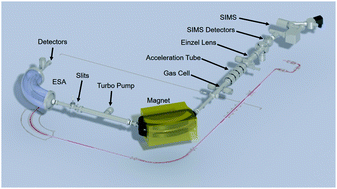An overview of NRL's NAUTILUS: a combination SIMS-AMS for spatially resolved trace isotope analysis
Abstract
We present a description of the capabilities and performance of the NAval Ultra-Trace Isotope Laboratory's Universal Spectrometer (NAUTILUS) at the U.S. Naval Research Laboratory. The NAUTILUS combines secondary ion mass spectrometry (SIMS) and single-stage accelerator mass spectrometry (SSAMS) into a single unified instrument for spatially resolved trace element and isotope analysis. The NAUTILUS instrument is essentially a fully functional SIMS instrument with an additional molecule-filtering detector, the SSAMS. The combination of these two techniques mitigates the drawbacks of each and enables new measurement paradigms for SIMS-like microanalysis. Highlighted capabilities include molecule-free raster ion imaging for direct spatially resolved analysis of heterogeneous materials with or without perturbed isotopic compositions. The NAUTILUS' sensitivity to trace elements is at least 10× better than commercial SIMS instruments due to near-zero background conditions. We describe the design and construction of the NAUTILUS, and its performance applied to topics in nuclear materials analysis, cosmochemistry, and geochemistry.



 Please wait while we load your content...
Please wait while we load your content...